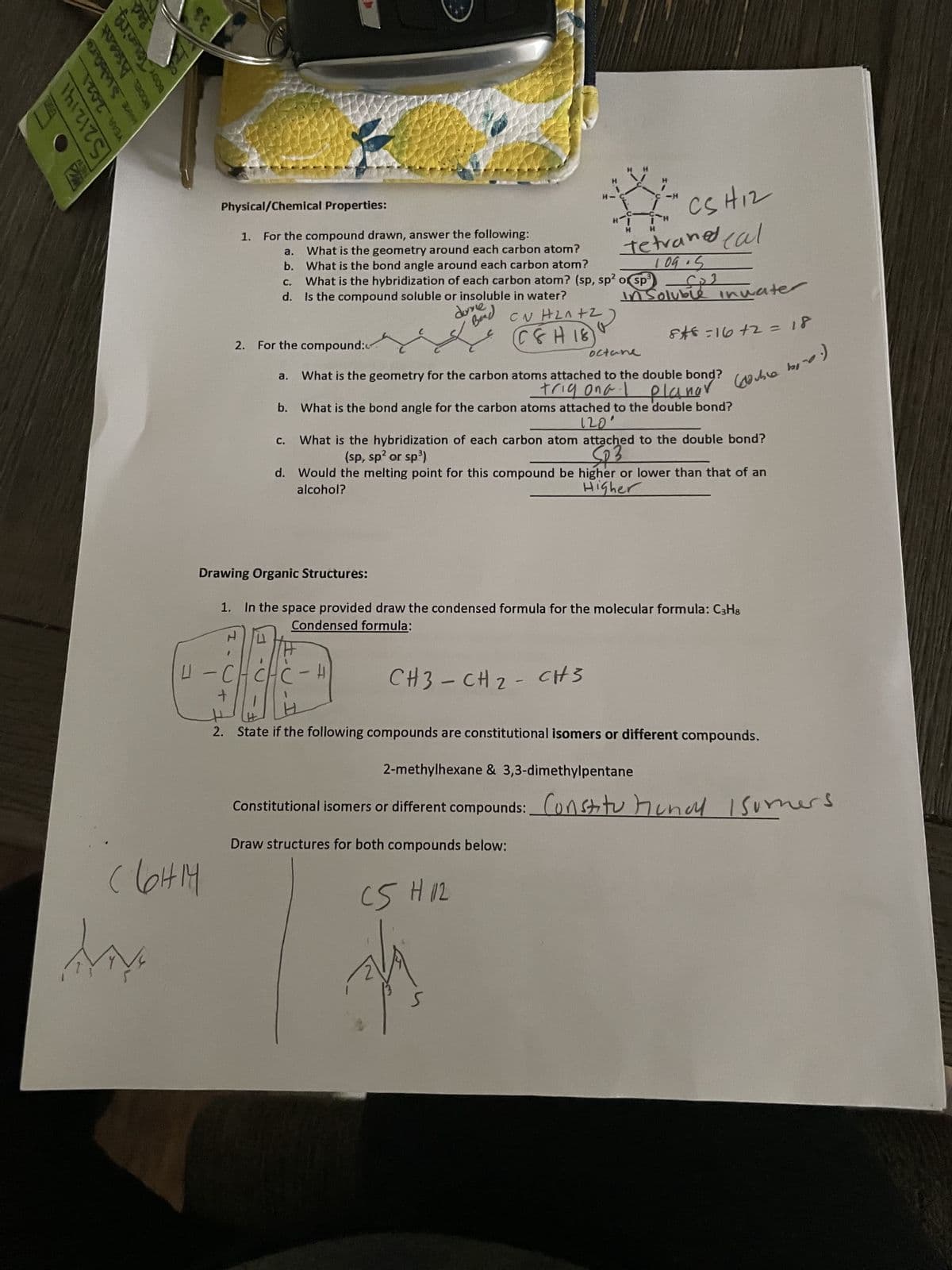YEAR 2021 we Slabora MODEL Ascent Thizis Physical/Chemical Properties: 1. For the compound drawn, answer the following: a. What is the geometry around each carbon atom? b. What is the bond angle around each carbon atom? C. d. C5H12 tetrand cal 109.5 1 in Soluble inwater 8$$=16 +2 = 18 What is the hybridization of each carbon atom? (sp, sp² of sp Is the compound soluble or insoluble in water? done • Bond CN H₂n+2) GEHIE
Formal Charges
Formal charges have an important role in organic chemistry since this concept helps us to know whether an atom in a molecule is neutral/bears a positive or negative charge. Even if some molecules are neutral, the atoms within that molecule need not be neutral atoms.
Polarity Of Water
In simple chemical terms, polarity refers to the separation of charges in a chemical species leading into formation of two polar ends which are positively charged end and negatively charged end. Polarity in any molecule occurs due to the differences in the electronegativities of the bonded atoms. Water, as we all know has two hydrogen atoms bonded to an oxygen atom. As oxygen is more electronegative than hydrogen thus, there exists polarity in the bonds which is why water is known as a polar solvent.
Valence Bond Theory Vbt
Valence bond theory (VBT) in simple terms explains how individual atomic orbitals with an unpaired electron each, come close to each other and overlap to form a molecular orbital giving a covalent bond. It gives a quantum mechanical approach to the formation of covalent bonds with the help of wavefunctions using attractive and repulsive energies when two atoms are brought from infinity to their internuclear distance.
Please take a look to see if I'm on the right track with my thinking thank you for your time.

![WES
4. Based on Zaitsev's rule, write the major/minor products, as well as the side product, for
the following dehydration reaction of alcohols and label the major product.
OH
major
First indicate the classification of alcohol (primary, secondary or tertiary), then using the
classification, draw the aldehyde, ketone, carboxylic acid or no product formed when
the following alcohols are mildly oxidized. *keep in mind there is a byproduct of water in
most oxidation reactions
1.
तं तं लं
2.
3.
a.
4.
b.
H₂SO4
180°C
H
1.
H-
H H OH
C-C-H
H H H
opt
CH3-CH-CH3
Classify the alcohol: 1°, 2° or 3⁰
OH
Classify the alcohol: 1°, 2° or 3⁰
6. In the following structure, list all 7 of the functional groups present.
O
2.
J
3.
minor
Aldehyde
ether
Alkene
Aromatic
[0]
D
__1°
4.
[0]
Aldehydes.
5.
с
CH3-11
|||20
C-CH3 +₂0
0
HS
5.
?
H3C-CH2-CH2-OH-O
CH3-CH2-CH
6.
OH
7.
OH
thiol
Alcohol
6.
7. Carboxylic acid](/v2/_next/image?url=https%3A%2F%2Fcontent.bartleby.com%2Fqna-images%2Fquestion%2F641ccbc3-2d51-43b8-8ccd-000638125ddc%2F8756a5bb-a5bd-4b94-bab6-2e133876e978%2F8jluf8h_processed.jpeg&w=3840&q=75)
Step by step
Solved in 3 steps







